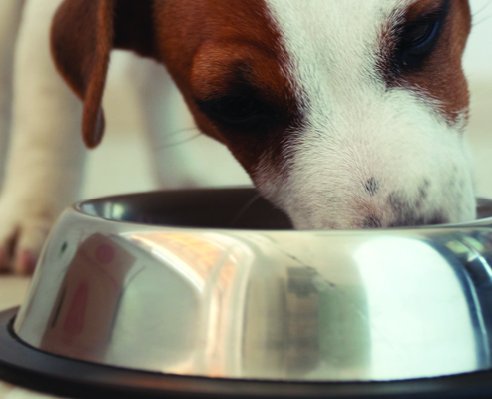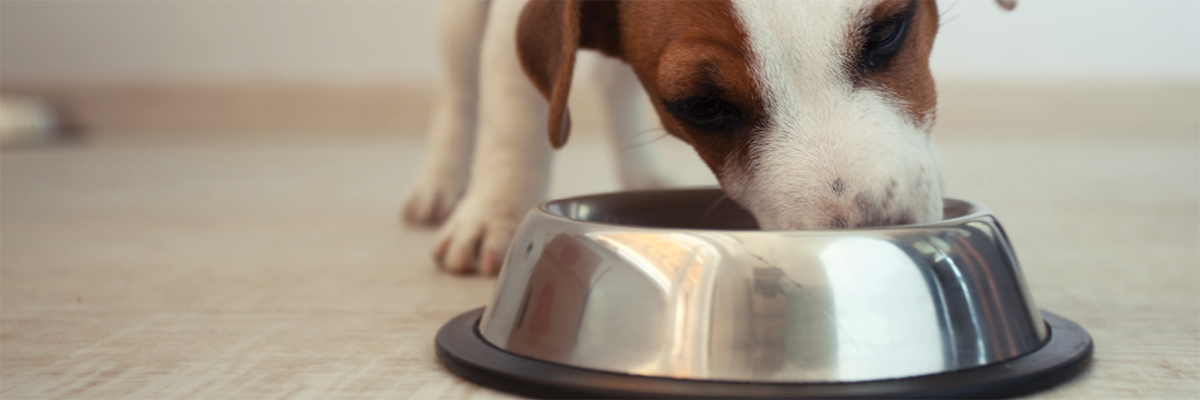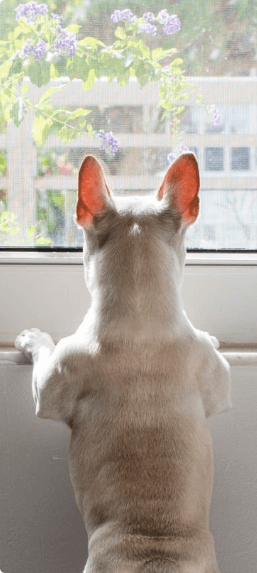
How To: Feed a Raw Diet
Raw pet foods have been growing in popularity for years – and with good reason. Raw diets provide high-quality nutrition that closely matches what dogs and cats ate in the wild for millennia.
Benefits of raw pet foods
Pet parents who incorporate raw foods into their pet’s diets report the following benefits:
- Fewer allergies or controlled allergy symptoms – This results in lower vet bills and less physical discomfort for the pet.
- Lush, glossy coat and healthy skin – Results in less shedding and mess around the house.
- Smaller, firmer stools – For the owner, this means less backyard clean up.
- Naturally clean teeth – Most dry foods leave a starchy coating on teeth; the starch contributes to plaque buildup. Raw diets don’t contain the starchy carbohydrates that stick to teeth, and meat and fat simply don’t adhere the way starches do. So raw feeders typically see better dental health because the building blocks for plaque are not present.
- Increased energy to support vitality and health – The body expends less energy digesting foods and more energy is available for other things… like playing!
- Decreased litter box odor – Many dry pet foods include protein that is less digestible, which leads to an undesirable odor in the litter box. For carnivores, plant based proteins are harder to digest.
- Natural weight control – Cats (especially) and dogs maintain a healthier weight on a high protein, low carbohydrate, high moisture diet.
It isn’t all or nothing! Incorporating raw foods into your pet’s diet
Although pet parents will typically see the most obvious benefits when they choose to switch entirely to a raw diet, raw feeding isn’t all or nothing. Just as humans can improve their health by swapping out that side of fries for a more nutritious side salad, pets can also experience better health when pet parents add raw foods as a “healthy side” or “booster” to a kibble or can-based diet. There are no rules for what the best choice is – it all comes down to making the best choice for your pet and your budget.
Choosing between raw foods
We split raw foods into two categories: raw frozen and freeze-dried/dehydrated. Whichever you choose, we recommend alternating between 2 or 3 different protein sources. Like all mammals, dogs and cats do best on a varied diet. You can switch between proteins daily, or alternate each time you open a new bag.
Raw Frozen
Raw frozen pet food is what most people think of when they imagine raw dog food or raw cat food: it looks, quite literally, like what you might see in the butcher section of the supermarket. Raw frozen pet foods differ from what you would get in the supermarket in two important ways:
- They include small amounts of ground animal bones and vegetables to ensure that the meal is nutritionally complete and balanced.
- They are subjected to a high-pressure water treatment (HHP) which eliminates pathogen bacteria. This is the same process used on lunchmeats, guacamole and other human foods. Because raw supermarket meat is intended for human consumption (and therefore expected to be cooked), it does not go through this process.
Raw frozen foods come in patties, nuggets, pellets and pates (for cats only). Choose nuggets or pellets for smaller pets and any shape for large dogs. Finicky cats sometimes prefer the pates to nuggets. Raw frozen foods are generally less expensive than their freeze-dried or dehydrated equivalents.
Freeze-Dried and Dehydrated
Freeze-dried and dehydrated raw foods are as easy to feed as kibble, yet provide the same nutritional benefits as their raw frozen counterparts. Pour the right amount of food into a bowl, add water, and viola! – dinner is served. If you’re not interested in thawing frozen meat, freeze-dried and dehydrated pet foods are for you. When comparing the pricing for dehydrated foods to raw frozen or kibble, make sure to compare total servings, not pounds of food. Because the water has been removed, the serving size by weight is much smaller.
How to transition foods
Pets who have switched foods frequently in the past tend to have a smoother transition. Introduce diet rotation early on to make transitions easier in the future. A pet on one diet for an extended period of time or a pet with a sensitive stomach will require more time. The general rule of thumb for switching foods is to be done over 7-10 days. Recommend this schedule:
- Days 1-3: 75% old diet + 25% new diet
- Days 4-7: 50% old diet + 50% new diet
- Days 7-10: 25% old diet + 75% new diet
- Day 11: 100% new diet
Keep in mind the pace at which the pet changes foods will generally depend on the pet’s poop consistency. If the poop remains firm, with no constipation, the pet parent should feel free to continue. If not, revert to the feeding schedule of the day before until the pet has a healthy poop again before proceeding.
Many pets do well unassisted with this slow gradual change in diet. Others may need a supplement to be successful. All pets are different so don’t jump to the conclusion the food is bad simply because your pet needs a slower transition.
Anyone who has attempted to transition a cat to a new food knows that the cat is in charge of the process. At a young age, cats can imprint on food texture. Ever have a pet parent tell you their cat is a kibble addict or that their cat only likes certain textures of canned diets? Exposing kittens to a lot of textures early on can help prevent these issues. This doesn’t mean we can’t get an adult cat to eat other foods, it will require more patience though. Cats aren’t just addicted to texture but also to temperature of their food. Some ideas to help transition cats:
- Add water, goat’s milk, or bone broth to change the kibble’s texture slowly.
- Hide a tiny bit of new food at the bottom of their bowl under their old food.
- Instead of jumping straight to a frozen raw diet from kibble, try introducing a freeze-dried diet first.
- Try letting a frozen raw diet come to room temperature before introducing to your cat.
- Don’t free-feed your cat.
Good luck! If you have any questions about raw foods or pet nutrition in general we're always here for you.


